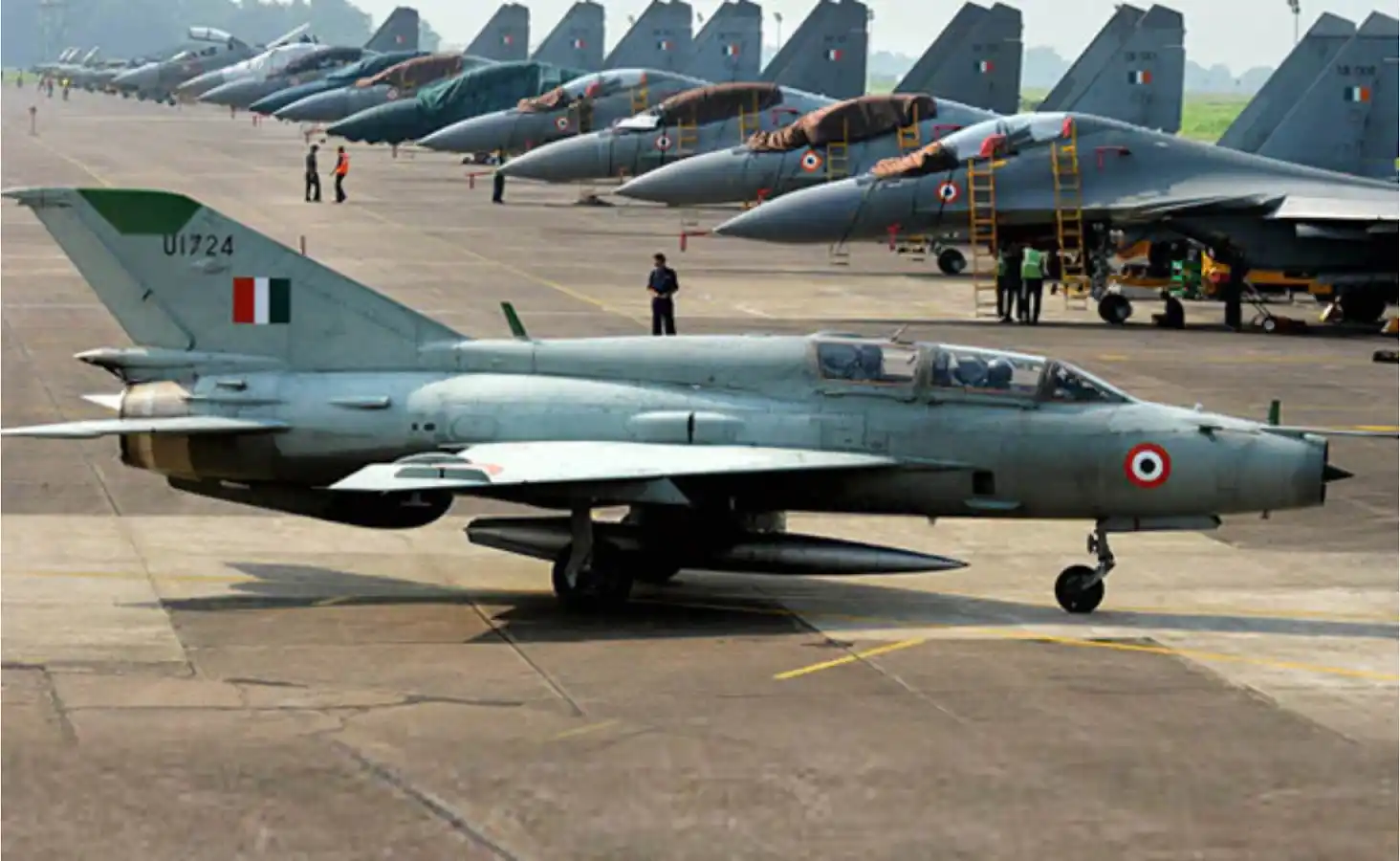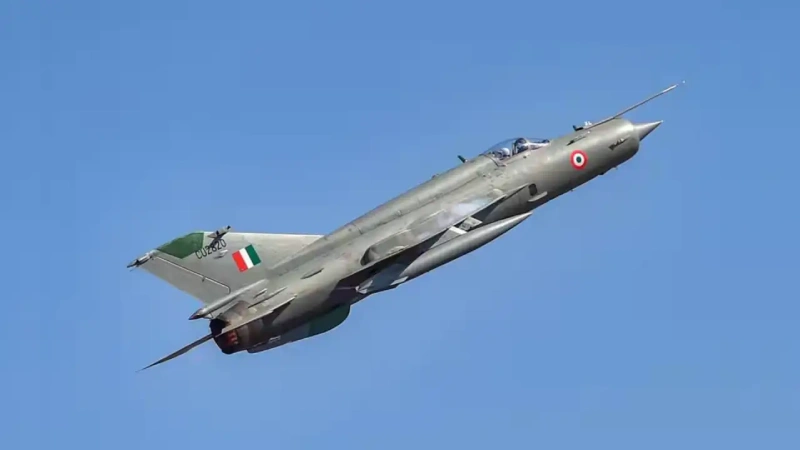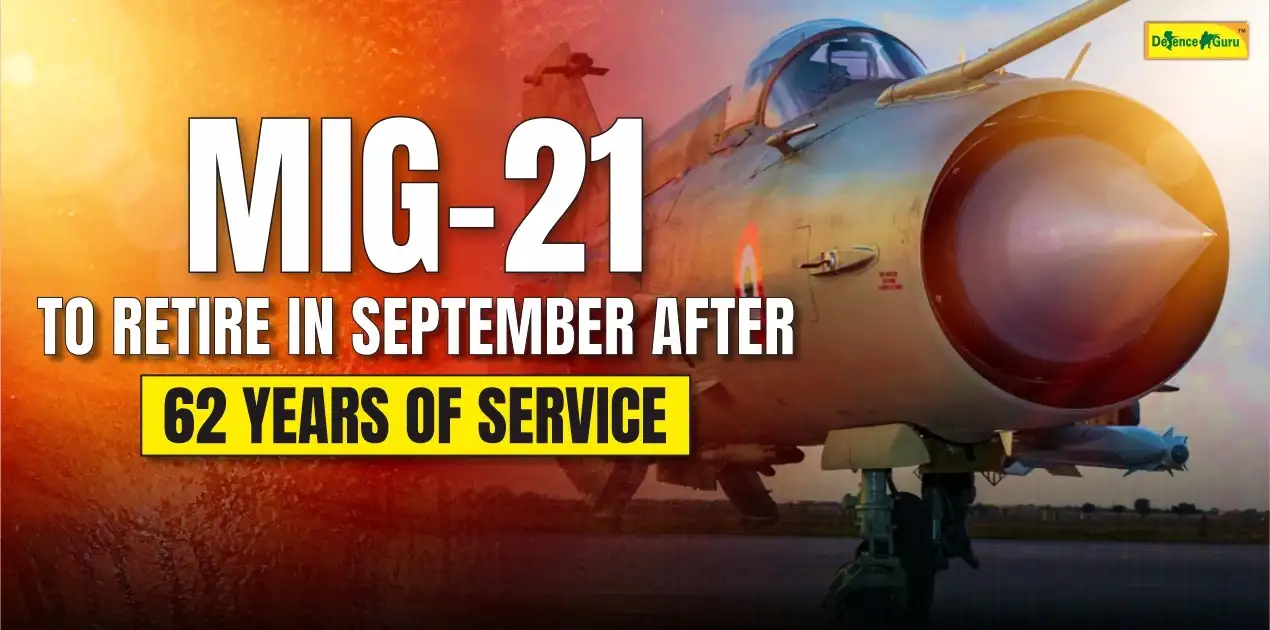IAF Says Goodbye to Its Oldest Fighter Jet
September 26, 2025, is when the era ends as the MiG-21 fighter jet will be formally retiring from service with the Indian Air Force (IAF). There will be a special valedictory function at the Chandigarh Airbase to bid farewell to an era as India's longest-serving aircraft era concludes.
The function will be addressed by Defence Minister Rajnath Singh as the guest of honour, along with other top military commanders like CDS Gen Anil Chauhan, Army Chief Gen Upendra Dwivedi, Navy Chief Admiral Dinesh Tripathi, and Air Chief Marshal AP Singh. Top IAF command officers from all commands will also be present to pay their respects.

A Jet That Changed the Game
The MiG-21 became part of the Indian Air Force in 1963 as the country’s first supersonic fighter jet. It was first built in the Soviet Union and later made in India by HAL. The jet was known for its incredible speed and agility, giving the IAF a major boost in the skies.
At its peak, there were over 850 MiG-21s, with almost 600 manufactured in India itself. It was the backbone of the IAF for several decades. Today, just 36 aircraft survive, all belonging to the illustrious 23rd Squadron, the Panthers.
A Fighter That Proved Its Worth
The MiG-21 has played a role in almost every war India has fought since the 1960s:
- 1965 war with Pakistan: its first real combat experience.
- 1971 war for Bangladesh’s liberation: where it proved its dominance.
- 1999 Kargil conflict: even took on missions in the mountains.
- 2019 Balakot air strike: supported operations in escort and defence roles.
Flying the MiG-21 has been a badge of pride for generations of IAF pilots.
The Flying Coffin Controversy
Despite its achievements, the MiG-21 has been at the centre of controversy due to a high number of crashes, especially in the last 2 decades. These unfortunate incidents earned it the infamous nickname: ‘Flying Coffin’. Between 1970 and 2020, over 400 MiG-21s were lost in crashes, resulting in the deaths of more than 200 pilots. Mechanical failures, outdated systems, and the challenging nature of the aircraft contributed to its deteriorating reputation.
Critics asked why the plane lasted this long in service. The reason is the cost-effectiveness of the aircraft, existing infrastructure, and the slow pace of indigenous fighter development. Nevertheless, seeing the necessity of modernisation, the IAF slowly phased out the MiG-21 by introducing new jets such as the Tejas, Rafale, and upgraded Su-30MKIS.
A Pilot Making Machine
Although it had its limitations, the MiG-21 has flown and shaped generations of Indian fighter pilots. It was known in the IAF as the pilot maker due to the intense and intricate act of flying aircraft. Succeeding at the MiG-21 was a badge of honour – evidence that the pilot had arrived in the fighter stream. For most pilots, flying the MiG-21 was the highlight of their career. For those who had watched it fly overhead while they were growing up during Republic Day parades and air shows, it was a symbol of India’s Air Power.
As aviation expert Angad Singh so well puts it, “No Other fighter has served with the IAF for as long as the MiG-21. It has been a part of almost every military operation since 1965, including Op Sindoor. For many Indian fighter pilots this aircraft this aircraft has been an integral part of their career. Its retirement will be a very emotional moment.”

Today’s Farewell
The retirement ceremony will be followed by a farewell flypast in two formations, 'Badal' and 'Panther,' and six MiG-21s of the 23rd Squadron. The aircraft will be accorded a water cannon salute on landing.
In a unique honour, Air Chief Marshal AP Singh will fly the last sortie personally, on call sign 'Badal 3.' He will be joined by Squadron Leader Priya Sharma, representing the future generation of pilots who have flown this iconic plane.
Looking Ahead
The MiG-21’s exit will make way for modern fighters like the Tejas Mk1A, built in India, and the Rafale. These jets will take on the role once played by the MiG-21, ensuring the IAF continues to stay strong and modern.
Closing a Chapter
For 62 years, the MiG-21 has been more than just a machine; it has been a part of India’s military story. It has fought in wars, trained pilots, won battles, and left behind painful memories.
As it takes to the skies one last time today, the MiG-21 will leave behind a legacy that will never be forgotten.
Read more:
Indian Army Set to Induct Three AH-64E Apaches Arriving in Jodhpur
Indian Army Tests Akash Prime Air Defence at 15,000 ft in Ladakh

















